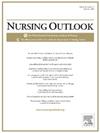骨折FRAX:护士在国际骨质疏松骨折风险计算中考虑种族主义的作用
IF 3.7
2区 医学
Q1 NURSING
引用次数: 0
摘要
目的本文将通过使用基于种族和民族的计算来研究种族主义在计算骨折风险中的作用,并为护士提供指导,以减轻进一步加剧骨折护理中基于种族的不平等的风险。背景:在骨折风险计算中使用种族调整,如FRAX,反映了护理和医学中系统性种族主义的历史,特别是在骨质疏松症的筛查和治疗中。骨质疏松相关骨折会导致成本增加、残疾和死亡,是一个公共卫生问题。证据的来源本评论考察了遗传和社会历史证据,以阐明种族具有生物学基础的谬论,并概述了在骨折风险评估中使用种族的含义。基于种族的风险计算,包括评估骨折风险,是医疗和保健部门使系统性种族主义永久化的机制之一。对护理实践和政策的影响呼吁护士采取行动,解决基于种族的算法(如FRAX)对不平等待遇的促进作用。护士应该提倡在这些临床决策工具和案例研究中去除种族因素。此外,护士应该提倡用更好的工具取代它们,这些工具不使用种族,而是使用结构性种族主义来计算风险。应发布政策指导,使种族这一维护权力结构的社会历史分类工具不再被用作骨折或其他疾病的其他更相关和更精确的风险因素的近似。结论护士在培养和实施反种族主义方法以纠正骨质疏松症和其他可预防疾病筛查和治疗中的健康不平等方面至关重要。本文章由计算机程序翻译,如有差异,请以英文原文为准。
Fractured FRAX: Nurses’ role in reckoning with racism in international osteoporosis fracture risk calculations
Aim
This paper will examine racism’s role in calculating fracture risk via the use of race- and ethnicity-based calculations and offer guidance for nurses to mitigate the risk of further exacerbating race-based inequities in fracture care.
Background
Using race adjustments in fracture risk calculation, such as in the FRAX, reflects the history of systemic racism in nursing and medicine, particularly in screening for and treating osteoporosis. Osteoporosis-related fractures, which result in increased costs, disability, and death, are a public health problem.
Sources of Evidence
The critique examines genetic and sociohistorical evidence to illuminate the fallacy that race has biological underpinnings and outline the implications of using race in fracture risk assessment.
Discussion
Race-based risk calculation, including assessing fracture risk, is one of the mechanisms by which the medical and healthcare sectors perpetuate systemic racism.
Implications for Nursing Practice and Policy
Nurses are called to action to address the contributing role of race-based algorithms, such as the FRAX, to unequal treatment. Nurses should advocate for the removal of race in these clinical decision-making tools and case studies. Additionally, nurses should advocate for their replacement with better tools that do not use race but rather measures of structural racism to calculate risk. Policy guidance should be issued so that race, a sociohistorical tool of categorization to preserve power structures, should no longer be used as an approximation of other more relevant and precise risk factors for fractures or other diseases.
Conclusion
Nurses are critical in cultivating and implementing antiracist approaches to remediate health inequities in screening and treatment of osteoporosis and other preventable diseases.
求助全文
通过发布文献求助,成功后即可免费获取论文全文。
去求助
来源期刊

Nursing Outlook
医学-护理
CiteScore
6.20
自引率
7.00%
发文量
109
审稿时长
25 days
期刊介绍:
Nursing Outlook, a bimonthly journal, provides innovative ideas for nursing leaders through peer-reviewed articles and timely reports. Each issue examines current issues and trends in nursing practice, education, and research, offering progressive solutions to the challenges facing the profession. Nursing Outlook is the official journal of the American Academy of Nursing and the Council for the Advancement of Nursing Science and supports their mission to serve the public and the nursing profession by advancing health policy and practice through the generation, synthesis, and dissemination of nursing knowledge. The journal is included in MEDLINE, CINAHL and the Journal Citation Reports published by Clarivate Analytics.
 求助内容:
求助内容: 应助结果提醒方式:
应助结果提醒方式:


